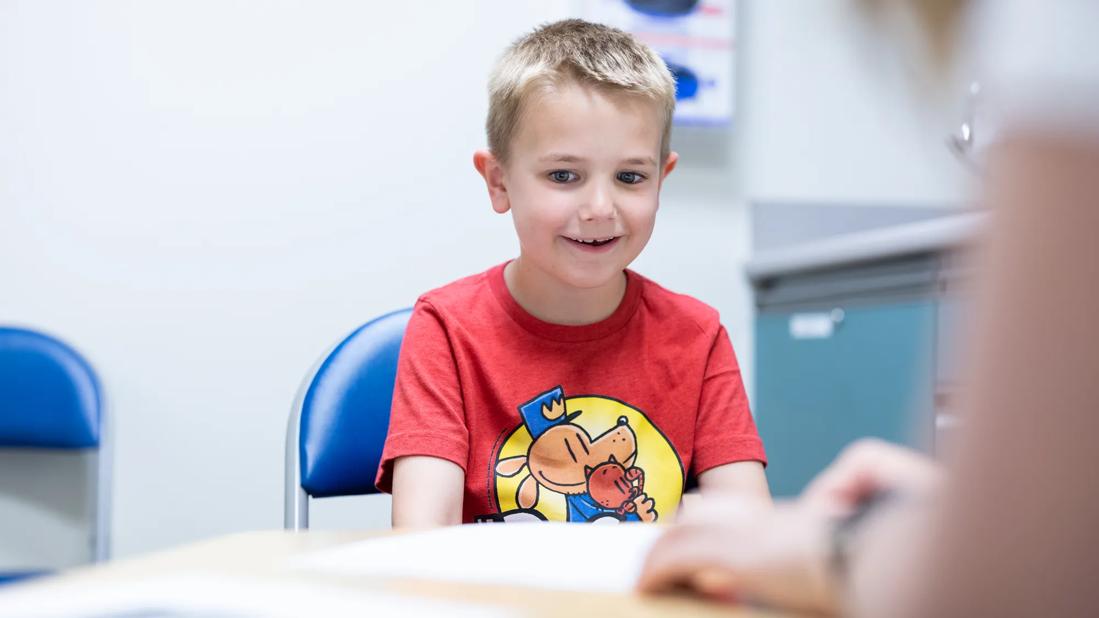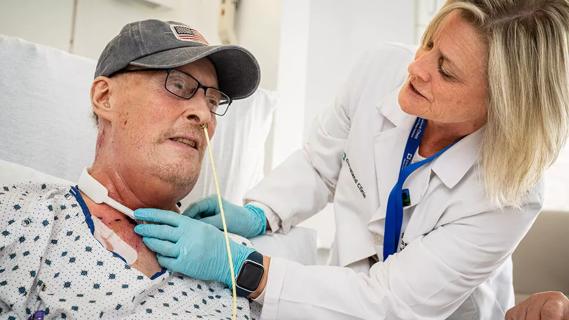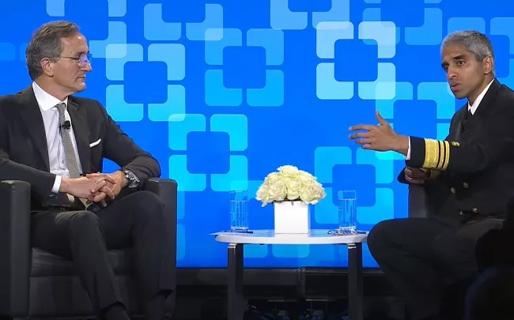Promoting accessibility for all children

Though many people communicate through sign language or augmentative and alternative communication (AAC), our society typically focuses on verbal communication, says Jennifer Gibbs, a clinical speech pathologist at Cleveland Clinic Children’s Hospital for Rehabilitation. “All individuals have the right to access to communication, so it’s imperative that we honor multimodal communication — AAC, sign language and gestural language — in order to fully embrace all forms,” she says.
Advertisement
Cleveland Clinic is a non-profit academic medical center. Advertising on our site helps support our mission. We do not endorse non-Cleveland Clinic products or services. Policy
As a speech therapist in a pediatric outpatient setting, she has personally observed communication breakdowns, in various settings but often when in larger community spaces such as a gym or hallway and patient frustration often follows.
“Communication breakdowns happen all the time here in outpatient therapy. I kept going to back to these pictures thinking, ‘We have a need for these boards,’” says Gibbs. “If these communication breakdowns are happening, why are we not giving the patient access to tell us why they’re crying, why they’re upset, why they’re refusing to move?”
Around the same time Gibbs became aware of these communication boards, Cleveland Clinic’s Catalyst Grant, a program designed to fund Cleveland Clinic employees’ ideas, was opening its winter cycle for applications. Gibbs decided it was the perfect opportunity to request funding for placing multiple communication boards throughout the therapy services area.
“Therapy is hard in general, regardless of your age, but especially for minimally speaking children it can get even harder when the demand is taxing on them,” explains Gibbs. “I realized these communication boards could be a great tool to assist in preventing and repairing communication breakdowns.”
Gibbs reached out to a company that produces communication boards and worked with a representative to design the board specifically for their facility. The mock-up the two created includes more than 100 icons, as well as a QWERTY keyboard at the bottom.
When she applied for the Catalyst Grant in March 2023, Gibbs decided to “go big or go home” and request funding for multiple boards in each location, stressing the importance of access to communication for all. She was shocked and pleased to learn two months later that the Catalyst Grant had decided to fully fund her project.
Advertisement
The journey to bring the communication boards into reality was more complex than Gibbs initially realized. “There are a lot of people involved that help these grants actually take off,” she says. “Once you’ve submitted the idea and you’ve been funded, you are the point person, but there are a lot of other people who help you get the final product out there and available to be used.”
After sitting in on meetings with the Cleveland Clinic design team, along with weekly meetings with the Catalyst Grant team and fellow grant awardees, Gibbs was thrilled when the completed boards arrived in March 2024. They are now hanging in transition hallways and treatment areas throughout the facility.
The icons on the boards are in both English and Spanish. Several icons are drawings made from photos of actual equipment used at the facility, such as a scooter board and a bubble tube. Though the board is not interactive, it allows patients to point to the appropriate icon or to “type” out letters on the keyboard to communicate their needs.
Gibbs’ colleague, Merri-Jo Somodi, a physical therapist at Cleveland Clinic Children’s Hospital for Rehabilitation, adds, “It has been amazing to watch the patient and therapist's interactions while using the boards. It is helping to support positive relationships and build confidence in our patients.”
The boards are also beneficial for non-speaking patients, particularly when they select the icon indicating they want to go home. This gives the therapist an opportunity to respond with understanding and instructions on what needs to be done before that can happen. “Having that exchange in communication is what this is about,” says Gibbs.
Advertisement
Many therapists have also found the boards helpful to use with their verbal Spanish-speaking patients. “Because the icon is in English and Spanish, we go over to the board, and they can find what they’re trying to say. This allows the therapist to honor what the child is saying and repairs that breakdown,” Gibbs says.
Communication boards can also be used for patients with brain injuries and older patients who lose speech clarity, which is why Gibbs would love to see these boards in every doctor’s office and rehab facility. “We live in a multimodal communication world. This is just another mode of communication that can be used for any age,” she says.
Advertisement
Advertisement

Exploring the role of caregiver education and objective feedback on speech and language outcomes

A closer look at current uses and future opportunities

Patient navigator is the bridge across systems

5 things a child psychiatrist wishes all pediatricians would do

Modified Barium Swallow Study and Flexible Endoscopic Evaluation of Swallowing can both be used to diagnose dysphagia, but it’s important to understand their advantages and disadvantages

Peer-to-peer videos offer creative solution to help patients while they wait

Key findings and what it could mean for identifying high-risk patients

The Nation’s Doctor visits Cleveland Clinic to call attention to urgent public health issues